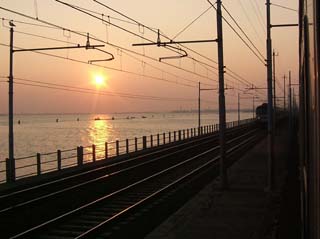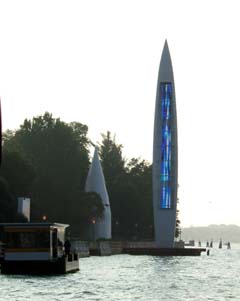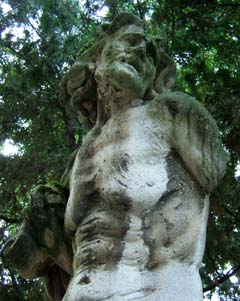
|
The night train from Nice arrives in Venice at
dawn. I spent an extra 20 euros for a "couchette" which is a
small
bunk bed suitable for a European. They cram six narrow beds into
a
small closet, a bit cramped but it did allow me a bit of sleep.
This train is the only approach to Venice by land. There are no
cars in Venice--at all. The usual route is by boat so they have
marked routes that parallel the railway to bring in supplies. The
train is for passengers.
|

|
There are two ways to
get around in Venice: by boat or by walking. Commuters can take
the waterbus but there are also watertaxis (or if you are not going
anywhere you can take a gondola). I paid to take the waterbus
from the
station but the ticket clerk was in a bad mood and short changed
me. After that I just walked everywhere.
|

|
The gondolas are
amazing pieces of craftsmanship. Each is custom made to exacting
traditions but varies in the elaborate decoration.
The Venetians just love decoration. The more the merrier.
The gondoliers seem quite proud of themselves too and wear their
striped
shirts and straw hats like they are fashion models.
|

|
Waterbus took me right to the main Biennial site.
|

|
Venice was once the
center of the art world so the place is littered with classical artwork
in a style that must date somewhere in the Renaissance. This
piece, just outside of the Biennial "Giardini", is my favorite so far
of the many statues to various heroes, mythical characters and
politicians that are scattered about in every town in
Europe.
She is old, out of fashion, covered in moss, missing most of her limbs,
all but
forgotten, but still beautiful. Venice.
|




